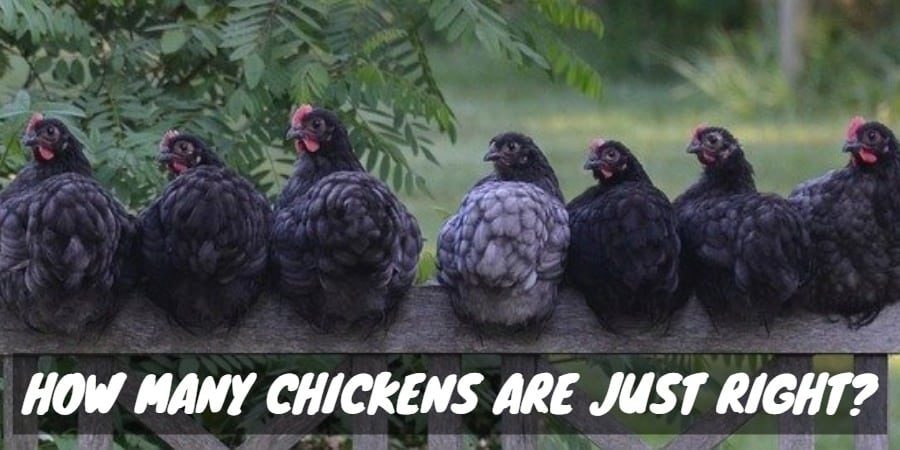Molting is a period when chickens lose their feathers and grow new ones. Chickens usually molt every year, and the annual molt will last between eight and 12 weeks. Chickens most commonly molt during fall and winter, and they usually stop laying or reduce egg production during that time.
Although most chickens molt on an annual basis, some will molt more or less frequently. Some chickens undergo a “light” molt, replacing a few feathers at a time. Others will have a heavier molt, sometimes developing bald patches or losing nearly all of their feathers at once. After you’ve kept your chickens for a year or two, you’ll be able to identify their quirks and habits. This will allow you to take the best care of them during molting season.
Why Do Chickens Molt?
Feathers provide protection and insulation for a bird. Unlike fur and hair, feathers do not grow continuously. Instead, feathers grow in and stay in place for a time before falling out and being replaced by a different feather. The only way for a bird to get a new feather is to lose the old one.
Chickens hatch with a fine, downy covering all over their bodies. Within six to eight days, this fuzzy covering is replaced with real feathers. Those juvenile feathers will fall out and be replaced with adult feathers by the age of 12 weeks. At this point, a rooster’s ornamental feathers will grow in. It becomes obvious at this age whether your chick is a hen or rooster thanks to the appearance of long saddle feathers, sickle tail feathers, and other sex-specific traits.
After this second juvenile molt, your chickens will experience their first adult molt around 18 months of age. After that point, molting will most likely occur on an annual basis, allowing for variations between individuals. Molting most commonly takes place in the fall and is usually triggered by colder weather and shorter days. Molting can also occur as a result of stress, including factors like poor nutrition, illness and insufficient space in the coop.
Molting is very important to the chickens because damaged feathers cannot keep them warm and protected. Without the insulation of feathers, chickens are very prone to the elements. Chickens need clean, unbroken feathers to stay warm and healthy. If you plan to keep chickens, you should learn to expect annual molting and prepare to assist your chickens through the process.
Signs of Molting in Chickens

Some chickens will be very obvious about their molting habits. You may notice that the chicken has a very unkempt appearance and may be balding in places. The absence of feathers is a good sign that the bird is going through a molt.
Other chickens may have more subtle molts. If a chicken is losing just one or two feathers at a time, you might not notice immediately. Finding loose feathers in the coop is a sign that a chicken might be molting. Chickens that stop laying or lay fewer eggs than usual may also be molting.
Chickens do not always molt according to a regular schedule. An unusual or unconventional molt is not necessarily a cause for concern. However, it pays to be cautious and to pay attention to your chicken’s symptoms and behavior. Chickens that are molting should not appear sick. They should have clear eyes and should not be noticeably depressed or quieter than the others. Because some illnesses can lead to the loss of feathers, it’s a good idea to learn the difference between a sick chicken and one that’s simply molting.
How Long Does Molting Last?
Molting is about more than simply losing feathers. During a molt, a chicken must also grow new feathers. It takes time for a feather to erupt from the skin and grow to its appropriate length.
Feathers begin as quills that break through the skin. This quill is the central shaft of the final feather. The soft feather grows out from the central quill. This process can take several weeks.
Some chickens will finish molting within three weeks of starting. Others take longer and may take eight to 12 weeks to complete a single molt. This means that chickens that start molting in the fall may continue molting well into the winter.
You can help speed up the molting process by providing a high-quality diet with extra protein while your chickens are molting. The protein will help them to grow feathers faster and reduce stress on the body, leading to faster and more successful feather growth.
Why Don’t Chickens Lay Eggs While Molting?

Feathers are organic tissue made up primarily of protein. Protein is also required to create eggs. A molting hen does not have enough nutrition to support both laying eggs and producing new feathers. For this reason, chickens will usually slow down with egg production or stop laying entirely during a molt.
Many chicken owners find that their hens slow down or stop producing eggs in the colder months. This slow-down in production usually coincides with a molt and is often the earliest sign of an oncoming molt. Don’t worry if your hen’s egg production slacks off for a few weeks out of the year; she needs that time to regenerate her feathers and stay happy and healthy.
You can speed up the process and protect your hen’s health during the molt by providing a protein-rich diet. The extra dietary protein can help support the chicken’s protein needs and may help her bounce back and start laying again sooner.
[amazon bestseller=”Mealworms for chickens”]
How to Care for a Molting Hen

The most important thing you can do for your chickens during a molt is to provide a high-protein diet. The standard diet for a laying hen contains 16 percent protein. During a molting period, you can swap over to a 20 to 25 percent protein broiler blend instead. The food may be slightly more expensive, but it will benefit you in the long run when your chickens can start laying again.
You can also supplement your chicken’s natural diet with additional treats. Chicken-friendly treats that are high in protein include soybeans, peas, raw and unsalted nuts or cod liver oil. Some farmers will use dog or cat food or supplement a diet with bone meal. These latter options may not be the most nutritious choice for the birds. Be sure to avoid feeding the chickens egg or eggshells as this can give them a taste for eggs and lead to egg-eating from the nesting box. And once they start, this is a difficult habit to break and can diminish your hen’s egg supply.
During molting, you’ll want to free-feed plenty of high-protein food and limit the amount of available scratch, so the diet doesn’t get diluted. Just be sure not to cut out scratch entirely as chickens require scratch to properly digest their food.
Aside from dietary issues, there are a few other things you’ll want to watch out for during the annual molt. Chickens going through a heavy molt may be more susceptible to cold and illness due to a lack of protective feather coverage. Be sure that the coop has plenty of bedding and that there are no drafts or leaks that might prevent your chickens from having a warm place to spend the night. Also, be sure to keep the coop clean to prevent the spread of bacteria and other things that could make the birds sick.
Chicken skin is sensitive during the molting period, and handling chickens in the quill phase of feather growth is uncomfortable for both humans and chickens. Avoid handling your chickens during the molt if possible. Excessive handling can cause pain and stress that may extend the molt or lead to other problems.
A final thing to watch out for in molting birds is a higher risk of injury. Chickens maintain a tight social structure called a pecking order, and that name is not accidental. Pecks and scratches can injure chickens without feathers. Keep an eye out for any fighting and intervene if a bird is being bullied during her molt. You may need to separate the chicken for a few days if the bullying becomes severe.
[amazon bestseller=”vitamins for chickens”]
Fortunately, molting is a common and natural occurrence for chickens, and it’s nothing to worry about. With a bit of care and extra husbandry, your chickens should be finished molting and back to normal within a few weeks.





Looking for the answer to feeding coffee grounds to chickens take your advice dump them in my compost Great in formation site